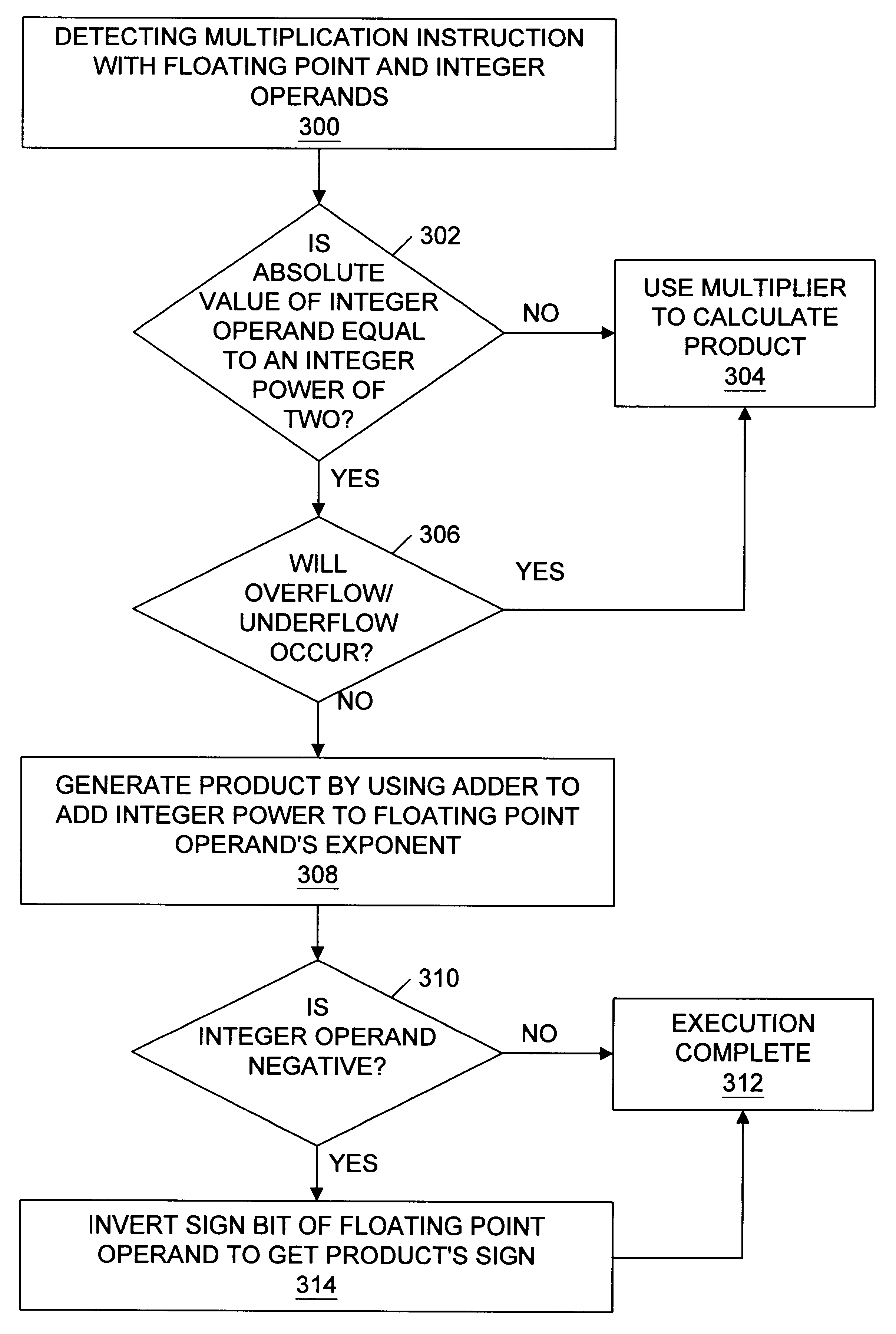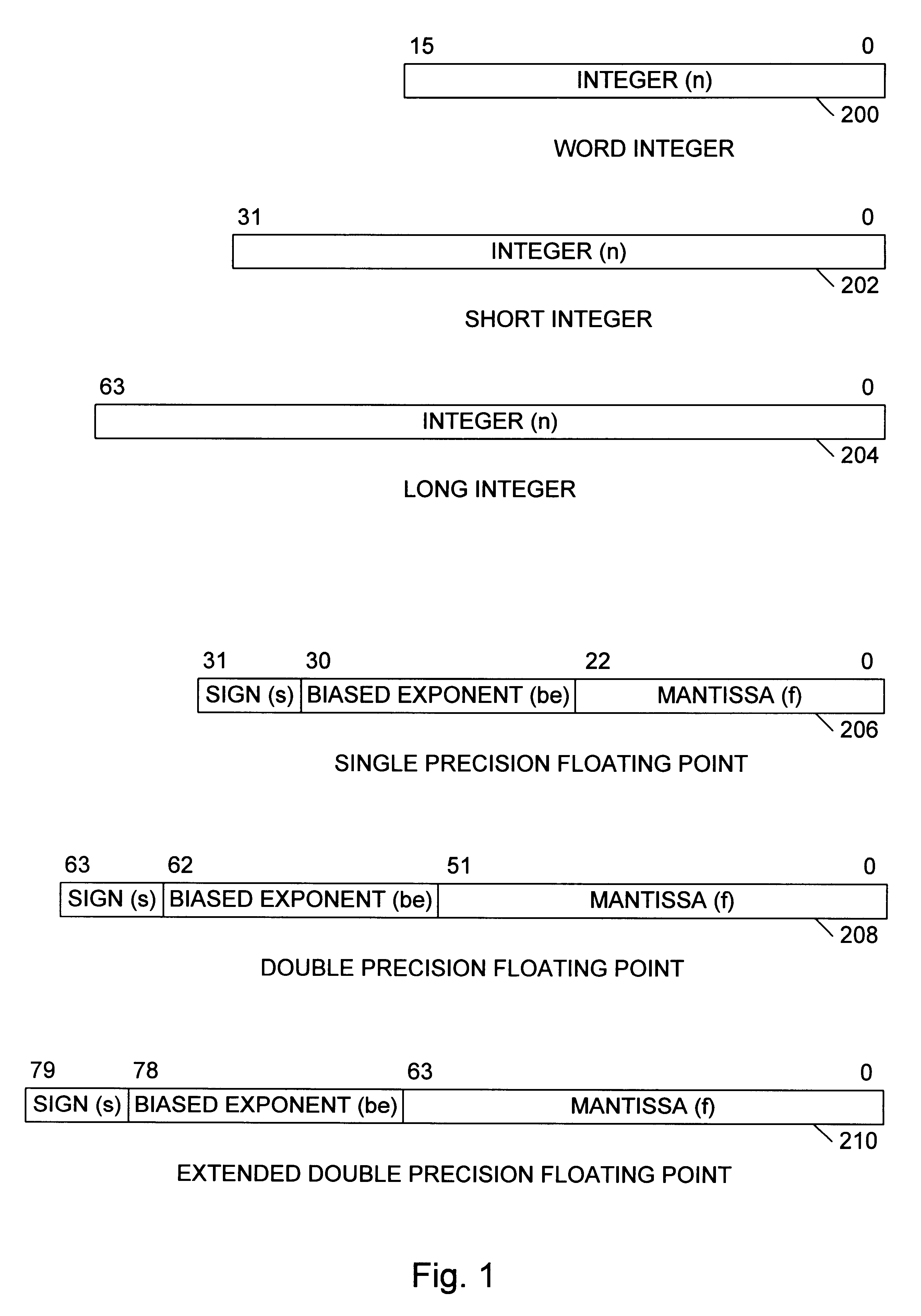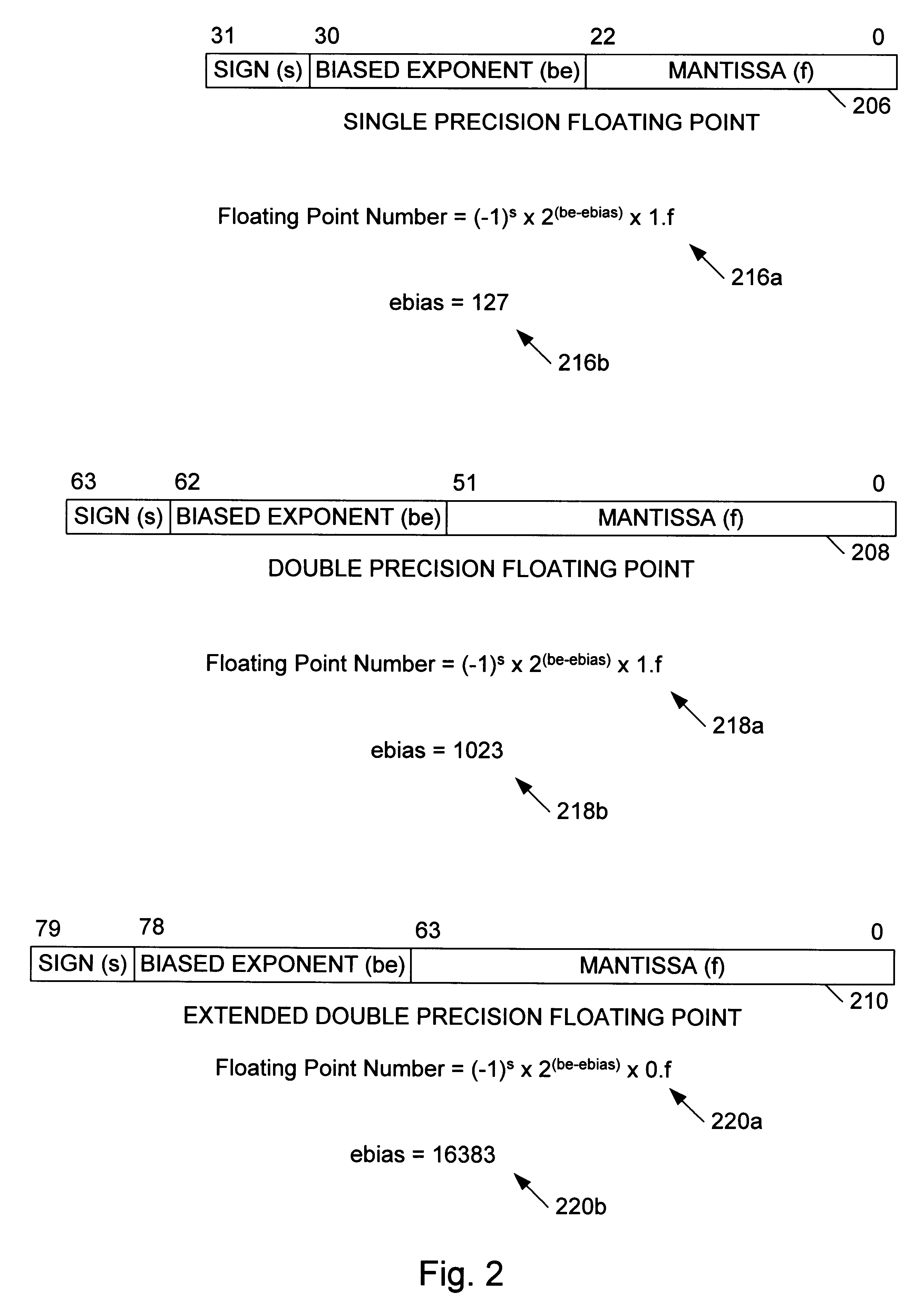Fast multiplication of floating point values and integer powers of two
a technology of integer powers and floating point values, applied in the field of floating point arithmetic, can solve the problems of taking significantly more clock cycles to complete, and complex multiplication of floating point values
- Summary
- Abstract
- Description
- Claims
- Application Information
AI Technical Summary
Problems solved by technology
Method used
Image
Examples
Embodiment Construction
Turning now to FIG. 3, a flowchart showing one embodiment of a method for fast multiplication of selected integer and floating point values is shown. First, each multiplication instruction is examined to determine whether or not one operand is a floating point operand and one operand is an integer (step 300). The type of operands to be multiplied may be determined by the presence of load instructions preceding the multiplication instruction. For example, the following code segment implements a floating point multiplication of an integer and a floating point value using x86 instructions:
As this exemplary code illustrates, FILD and FLD instructions preceding FMUL instructions may be detected (either in hardware or software) to determine whether a multiplication of an integer and floating point unit is being performed. Occurrences of the FIMUL instruction (convert integer to floating point, then multiply) may also be detected. Note, in other embodiments other instructions from other in...
PUM
 Login to View More
Login to View More Abstract
Description
Claims
Application Information
 Login to View More
Login to View More - R&D
- Intellectual Property
- Life Sciences
- Materials
- Tech Scout
- Unparalleled Data Quality
- Higher Quality Content
- 60% Fewer Hallucinations
Browse by: Latest US Patents, China's latest patents, Technical Efficacy Thesaurus, Application Domain, Technology Topic, Popular Technical Reports.
© 2025 PatSnap. All rights reserved.Legal|Privacy policy|Modern Slavery Act Transparency Statement|Sitemap|About US| Contact US: help@patsnap.com



